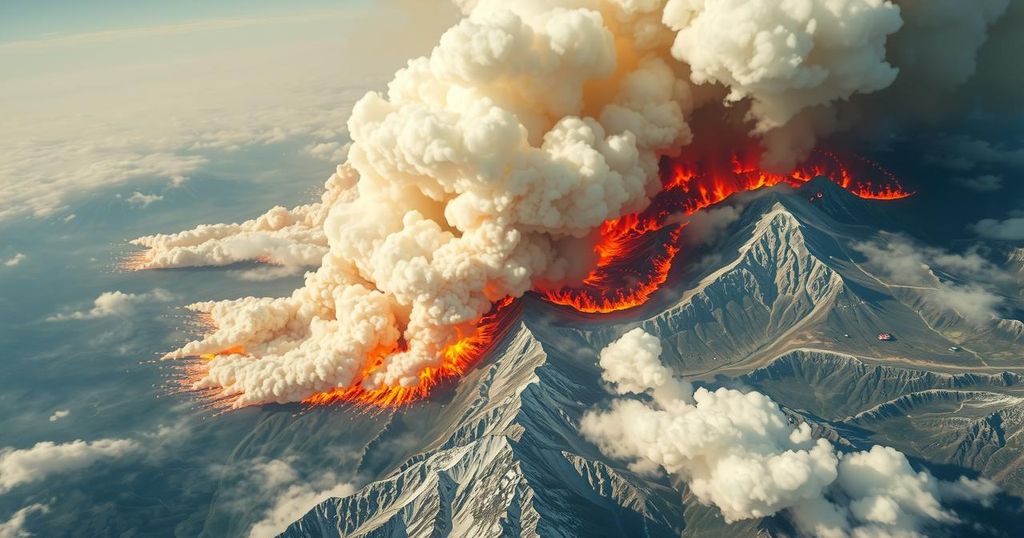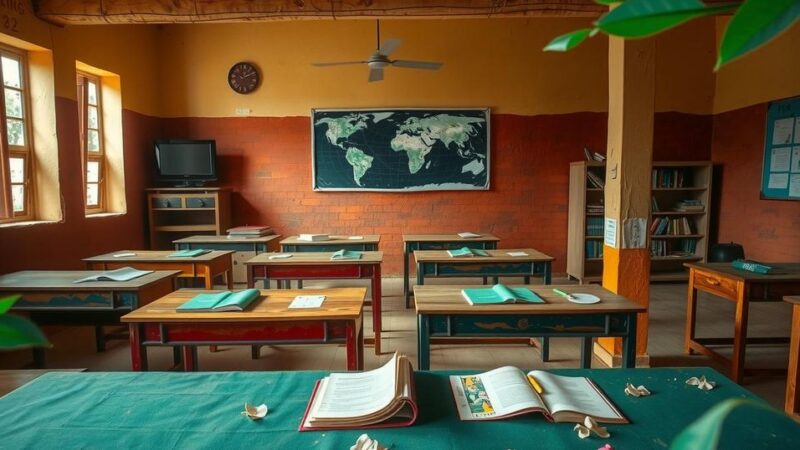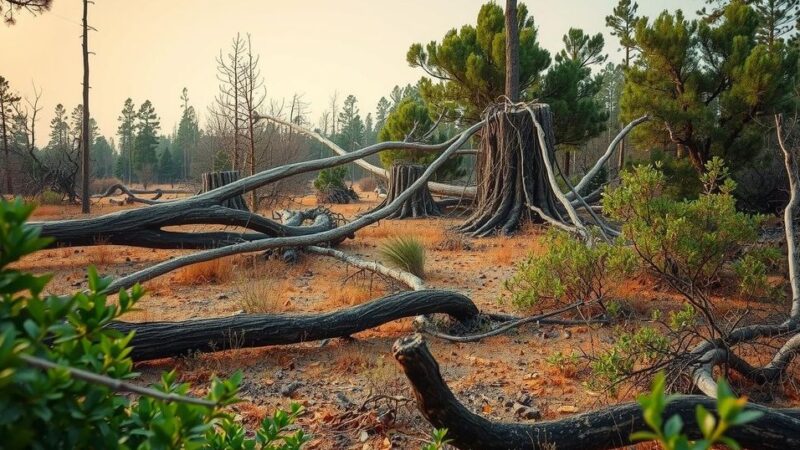On August 28, 2024, NASA’s NOAA-20 satellite captured significant fires and thermal anomalies in Brazil and Bolivia, marked by thick smoke attributed to high temperatures, low humidity, and drought. The images show fire hotspots and aerosol concentrations that may threaten visibility and public health. Interactive viewing options are available through NASA Worldview.
The Visible Infrared Imaging Radiometer Suite (VIIRS) aboard the joint NASA/NOAA NOAA-20 satellite captured significant fire activity and thermal anomalies in Brazil and Bolivia on August 28, 2024. The satellite imagery illustrates thick smoke originating from these wildfires, which are intensified by prevailing high temperatures, low humidity, and prolonged drought conditions in the region. The accompanying images present a true-color reflectance view with red dots marking the fire spots, while another image shows the concentration of aerosols in the atmosphere, indicating potential impacts on visibility and public health due to smoke and dust particles. The Aerosol Index reveals high levels of UV-absorbing particles, thus highlighting the environmental challenges posed by these fires. To observe this data interactively, users may access NASA Worldview, which provides near real-time satellite imagery and historical data.
The recent wildfires across Brazil and Bolivia represent a significant environmental concern, exacerbated by climatic factors such as high temperatures and extended periods of drought. These conditions not only facilitate the spread of fires but also contribute to an increase in smoke and airborne pollutants that pose risks to human health and ecological stability. Satellite monitoring, particularly through instruments such as VIIRS, plays a critical role in providing real-time data on fire activity and air quality, enabling timely interventions and raising public awareness.
In summary, the satellite imagery from the NASA/NOAA NOAA-20 highlights the severe fire situation in Brazil and Bolivia, illustrating the effects of adverse climatic conditions on wildfire occurrences. The presence of thick smoke and elevated aerosol levels emphasizes the consequent public health and environmental challenges. Continual monitoring through advanced satellite technology remains vital for understanding and mitigating the impacts of such natural disasters.
Original Source: www.earthdata.nasa.gov






